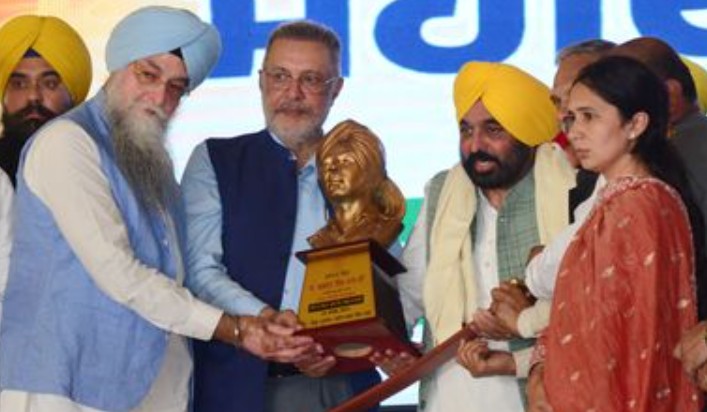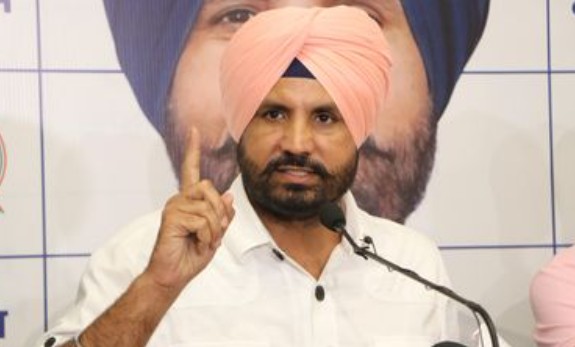Jalandhar, once known as the undisputed leader in India’s sports goods industry, now finds itself struggling to keep pace with time. Once a thriving hub of sports manufacturing and a source of pride for the country, the city is facing a range of challenges that threaten to erode its status as a premier center for sports equipment. The decline is not sudden but has been the result of years of neglect, changing global markets, and technological advancements that have left many traditional manufacturers struggling to adapt. Once a city that supplied sports goods to major international events and athletes, Jalandhar is now grappling with issues that threaten its very survival in the industry.
For decades, Jalandhar was synonymous with high-quality sports goods. From cricket bats and hockey sticks to footballs and boxing gloves, the city’s manufacturers catered to both domestic and international markets. The quality of craftsmanship was unparalleled, and the reputation of Jalandhar-made sports equipment extended far beyond India’s borders. Many of the country’s top athletes trained with equipment made in this city, and its name was spoken with pride whenever Indian sports were discussed. The industry provided employment to thousands of people, directly and indirectly supporting countless families and contributing significantly to the local economy.
However, as time passed, the challenges began to mount. One of the biggest reasons for Jalandhar’s decline has been the rapid globalization of the sports goods industry. International brands with massive production capabilities, sophisticated marketing strategies, and cutting-edge technology began dominating the market. Countries like China and Pakistan emerged as strong competitors, offering products at lower prices with faster production cycles. Many of Jalandhar’s traditional manufacturers, rooted in decades-old methods, struggled to keep up. The inability to adopt modern manufacturing techniques and invest in research and development further widened the gap between Jalandhar and its competitors.
Adding to the industry’s woes, there has been a lack of government support in helping the sector modernize. While other manufacturing hubs around the world have received financial incentives, tax breaks, and infrastructure development to stay competitive, Jalandhar’s sports goods industry has often been left to fend for itself. The high cost of raw materials, increasing labor wages, and inadequate policies to support small and medium enterprises have further pushed the industry into turmoil. Many businesses that once thrived have either shut down or significantly downsized, resulting in job losses and economic instability for those dependent on the sector.

A major factor that has contributed to the decline is the city’s struggle to adapt to new materials and technologies in sports manufacturing. Traditional wooden hockey sticks, once the pride of Jalandhar, have been replaced by composite materials like carbon fiber, which provide better performance and durability. Similarly, modern footballs and cricket equipment are now designed using advanced engineering and synthetic materials, giving international manufacturers an edge over Jalandhar’s traditional handmade goods. While a few companies have managed to adopt new technologies, most have found the transition difficult due to high costs and lack of expertise.
Another significant challenge has been the growing impact of e-commerce and digital marketing. Consumers today prefer to buy products online, and global sports brands have leveraged this shift by creating strong digital presences and direct-to-consumer sales models. Jalandhar’s traditional manufacturers, many of whom still rely on wholesalers and distributors, have struggled to make this transition. The lack of expertise in online marketing, branding, and direct consumer engagement has further hurt the competitiveness of the industry.
In addition to economic and technological challenges, infrastructure issues have also played a role in Jalandhar’s decline. Poor road connectivity, unreliable power supply, and lack of world-class industrial zones have hindered the sector’s growth. Many factories still operate in old, cramped spaces with outdated machinery, making it difficult to scale up production or meet international standards. Meanwhile, other sports goods manufacturing hubs, both in India and abroad, have modernized with state-of-the-art facilities, further pushing Jalandhar into the background.
Despite these challenges, there is still hope for revival if strategic interventions are made. Some manufacturers have already started embracing new technologies and are working to align themselves with international standards. A handful of businesses have begun investing in research and development, working on innovations that could help them regain competitiveness. There have also been efforts to collaborate with universities and sports institutes to develop new products that meet the evolving demands of modern athletes.
The government can play a crucial role in revitalizing Jalandhar’s sports industry. Providing financial aid, encouraging modernization, and creating dedicated sports manufacturing zones could significantly help struggling businesses. Skill development programs tailored to train workers in modern manufacturing techniques could also ensure that the workforce remains relevant in the face of changing industry trends. Additionally, promoting Jalandhar’s sports goods through international trade fairs and marketing campaigns could help rebuild its global reputation.
Another avenue for growth is leveraging India’s growing emphasis on sports. With government initiatives like Khelo India and the increasing focus on grassroots sports development, there is an opportunity for Jalandhar to become a key supplier of sports equipment for the domestic market. By aligning with the needs of schools, sports academies, and professional leagues within the country, local manufacturers could regain some of the market share lost to foreign brands.
Furthermore, embracing digital transformation could help manufacturers connect directly with customers and expand their reach. E-commerce platforms, social media marketing, and partnerships with athletes and influencers could provide a much-needed boost to Jalandhar’s sports industry. If businesses in the city can successfully transition to digital platforms and build strong brand identities, they may be able to reclaim their position in the market.
For Jalandhar’s sports goods industry to thrive again, a collective effort is needed. Manufacturers must embrace innovation, the government must provide necessary support, and workers must be trained in modern production techniques. With the right strategies, the city has the potential to reclaim its lost glory and once again become a powerhouse in sports manufacturing. While the challenges are significant, Jalandhar’s legacy in the sports industry is worth preserving, and with concerted efforts, it can emerge stronger in the years to come.


